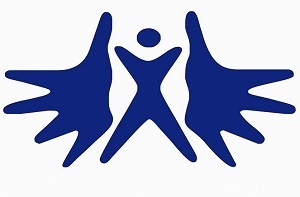An interview with Dr. Daniel Becker – Assistant Professor of Neurology at Johns Hopkins, and the Director of the International Neurorehabilitation Institute in Baltimore, Maryland.
Dr. Daniel Becker trained as an adult neurologist, and completed his residency at Vanderbilt University in Tennessee. He came to John Hopkins in 2007 for a fellowship in spinal cord injury medicine and stayed. He was the Director of paediatric spinal cord injury unit at Kennedy Krieger Institute before becoming the Director of the International Neurorehabilitation Institute in Lutherville, Maryland in 2013. There the focus is on multiple sclerosis, spinal cord injury, transverse myelitis, and cerebral palsy, amongst other conditions leading to weakness and spasticity. He is also one of the two physicians who run the Johns Hopkins Transverse Myelitis Center where he sees both adults and children. At the Consortium of Multiple Sclerosis Centers (CMSC) 2012 annual conference he presented a poster titled “Activity Based Rehabilitation May Preserve Function in Multiple Sclerosis”.
His original neurorehabilitation training was mainly focused on traumatic spinal cord injury (SCI). When he began seeing patients with multiple sclerosis (MS), and transverse myelitis (TM) at the Johns Hopkins Centre he started realizing the potential of advanced neurorehabilitation for this patient population. It was noted that these patients seem to attain equal benefit from the implementation of a Functional Electrical Stimulation (FES) program, as do the traumatic SCI patients.
Multiple Sclerosis Study: This study set out to see whether an FES program; or FES in an Activity-Based Restorative Therapy (ABRT) program can help improve, or at least stabilise, function in individuals with the progressive form of Multiple Sclerosis. The natural course of Progressive Multiple Sclerosis, is one of deterioration, as there is no pharmacological therapy available for this type of Multiple Sclerosis.
In Multiple Sclerosis the patients are separated based on the progression of their disease. For example, there is the relapsing remitting form that most people associate with MS. Relapsing Remitting Multiple Sclerosis (RRMS) is characterized by occasional relapses or attacks which results in some functional loss. Over time people regain some or most of this function back. Currently, all available MS medications only work in this phase of the disease.
After being in this relapsing remitting phase for about 10 years, up to 80% of patients will find their MS developing into the progressive form (Progressive Multiple Sclerosis). In this phase, the nervous system tends to lose the ability to repair in between attacks and there is a noticeable slow and steady decline. In this phase there are no pharmacological treatments available.
There is another group of patients who develop a Primary Progressive form of Multiple Sclerosis (PPMS). In this case, there are no true relapses. People continuously decline in function, some faster and some slower. There is also no pharmacological treatment available to help prevent disease progression.
The study was to establish whether an ABRT program utilizing FES, would stabilize or even improve the function of people with progressive MS. The key finding of this paper was able to show that most people were not getting any worse over a 2 year period. Some of them even recovered function.
Being as active as possible is the key for stabilizing the disease and may even help to recover some lost function. However being active is not just about exercising and going to the gym and lifting weights. What we have learned over the last few years, and this study supports it, is that FES has to be included in the exercise program. Dr. Becker therefore advocates for its use in every single MS patient. Restorative Therapy’s RT300 is currently the most efficient device they use to deliver functional electrical stimulation.
In an earlier Johns Hopkins study using FES, Dr. Douglas Kerr demonstrated a decrease in inflammatory markers and an increase in neuro-protection or repair markers. There is a biochemical link between FES and how it translates into recovery of function that they have set out to find. When they do, they hope to be able to make this intervention more efficient and hopefully available to all MS patients.
Transverse Myelitis (TM) is, in the majority of cases, a single inflammatory event affecting the spinal cord, which causes paralysis. It can be the initial presentation of MS. In MS there occur repeated inflammatory events injuring the spinal cord and the brain. So we believe TM is an important model for a single spinal cord injury. We therefore can extrapolate the findings from TM into MS and vice versa.
FES revolves around the concept that people have all of the tools for repair already within their spinal cord and brain. But there is something inherent to the spinal cord environment that prevents these cells from optimally repairing. It’s an environmental issue within the spinal cord. So why do they not repair? For stem cells to effectively repair, they first have to recognize that there is an injury. Then they have to move to the injury site. Once there they have to differentiate into a glial cell like an oligodendrocyte and start repairing.
However, this is what happens: the stem cells recognize that there is an injury. They are able to move to the injury. However, then they just sit there like bumps on a log. What the cells need to see is that the nerves they are supposed to repair are actively firing. If they are not firing, they cannot see them and therefore not know that repair is necessary. So how can we make them fire? We use functional electrical stimulation. By activating those nerves, the oligodendrocytes now know where to do the repair.
This is the chronic process that never stops. However, it takes a while and therefore has to be built into one’s life. So Dr. Becker recommend to his patients to use FES for one hour 3 to 5 times a week.
